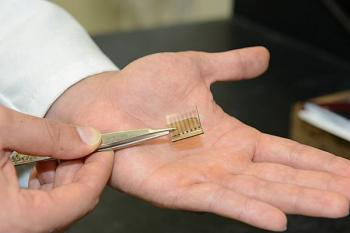Researchers from Stanford University managed to build a solar cell made entirely from carbon. Solar panels made from such materials can provide high performance at a low cost. The entire panel can be built using a coating process (the materials are soluble) and can be made flexible.

The two electrodes in the device are made from graphene and single-walled carbon nanotubes. The active layer (sandwiched between the electrodes) is made from buckyballs (which can be used to create graphene quantum-dots, by the way).
The current device is not very efficient (less than 1%), but the researchers expect to improve it dramatically using better materials and process technologies. Making smoother layers will help, for example, and different active carbon nanomaterials will absorb more light. One of the advantages of a carbon device is stability under high temperature and physical stress (it's very tough) - which means that it can be used where other PV devices fail.

